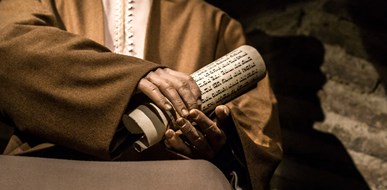The Concept of Liberty and Freedom in the Bible Commentary of Ishac Athias
Published 7 August 2019By Yehonatan Elazar-DeMota

©Shutterstock. The Thesoro de preceptos commentary serves as an excellent contribution to the 17th-century Dutch legal debate on slavery and slave trading.
The study of a 17th-century rabbinic commentary on the Hebrew Bible written by Ishac Athias, published in Amsterdam sheds light on the viewpoint of freedom within the Sephardic community.
The Romans considered libertas the natural state or condition of men. Indeed, Roman writers divided all men into liberi (free men) and servi (slaves). As with Roman legacy, the term did not cease to exist after the end of the Roman times, but went through a series of transitions in the medieval, early-modern and modern time periods. In the early modern era, there was a legal debate between scholastics and humanists on the concept of libertas. Spanish jurist, Fernando Vázquez (1512 — 1569) posited that natural liberty is a free faculty, unregulated by right and by reason. He understood liberty as the freedom to do what one wants. As lawyer for the Dutch East India Company, Hugo Grotius (1583—1645) understood that liberty in regard to actions was equivalent to ownership in regard to property. Dutch jurist, Willem de Groot (1667) argued that one should strive to conserve one’s liberty in the same way that one were to conserve one’s life. Around the same time, Rabbi Ishac Athias discussed notions of liberty and freedom, within his Thesoro de preceptos. This biblical commentary reveals Athias’ conceptions of libertas during the period when the Western Sephardi community engaged in slave trading in the West Indies.
Biography of Ishac Athias
Ishac Athias (Dias), a former converso, was born in Lisbon, Portugal, fled to Castile, Spain, then on to Venice, Italy. Later, he moved to Amsterdam, but the date of his arrival is unknown. He became a rabbinic scholar under the tutelage of Ishac Uzziel, during the same time as Menasseh Ben Israel. He was the first rabbi of the Portuguese congregation in Hamburg, Germany. After 1622, he became the rabbi of the Sephardi community in Venice.
While in Venice in 1627, he prepared Thesoro de preceptos, and printed a second edition in Amsterdam in 1649. In the preface of his work, he explains that he was moved to write this treatise because many Jews throughout the Sephardic diaspora did not have knowledge of Arabic, Hebrew, or Aramaic to be able to understand the Talmud nor the commentaries thereof. His goal then was to explain in Spanish how the Oral Torah works in conjunction with the Written Torah. Therein he follows the same organisation of the 613 positive and negative precepts according to the tradition of Moses Maimonides (1135 —1204) in the Mishneh Torah. This commentary serves as a great source for those seeking to understand the practical applications of slavery law in the seventeenth-century Western Sephardic legal thought. One can find instances where the Roman legal notions of libertas is used.
Six-Hundred and Thirteen Precepts of the Torah
The Constitution of the Hebrew People (Torah) contains 613 precepts: 248 positive precepts and 365 precepts. These are found within the five books of Moses (Genesis, Exodus, Leviticus, Numbers, and Deuteronomy). Apart from this written law, there is an oral law, which was received by the Prophet Moses at Mount Sinai and transmitted to the judges of his generation, until the second century, Common Era, when they were written down in the Mishnah. The explanations of how, when, why, and where of the Torah precepts are found in the Mishnah. After the last Supreme Court convened in the Holy Land (5th century CE.), rabbinic legislation ceased. Thenceforth, rabbinic authorities who were faithful to the Talmudic tradition only commented on the precepts and sought to find ways to apply them, within their respective contexts.
Who is free? The Slaves of the Amsterdam Portuguese Jewish Community
Already in the Iberian Peninsula, before the expulsion of the Jews of Spain and Portugal (1492-1496), the Jews therein had used domestic servants. When they were expelled, many of them took their household slaves with them to other parts of Europe and the Atlantic. In fact, some Portuguese Jews arrived in Amsterdam with their domestic servants in the early seventeenth century. Why would they need servant/slaves within their households? More specifically, to understand this social phenomenon better, we can look at a very concrete passage from Ishac Athias’ Thesoro de preceptos.
The Pagan Slave
In the positive precept number 235, the heading states: Que nos sirvamos en perpetuo, del siervo Pagano [That we serve ourselves perpetually with the Pagan servant]. Athias explains:
We cannot give him freedom, like we do with Hebrews…we call him Pagan, not because of his nationhood, and not because of his religion, because it is understood that he who has been circumcised and ritually immersed is a siervo; but the idolatrous Pagan that we purchase, if he doesn’t abandon his rites, we cannot keep him for more than a year. [Isaac Athias. Thesoro de Preceptos. Venice, Italy, 1627, positive precept No. 235].
In this context, ‘pagan’ is used instead of ‘gentile.’ He explicitly states that the epithet ‘pagan’ is not due to the slave’s religion, but the mere fact that he does not want to become a Hebrew. This use of language mirrors the use of ‘saracen’ by Spanish scholastics for non-Christians. One can infer from this text that Athias supports the idea that anyone that is not a Jew can become a slave of the Jews. In fact, the slave that does not accept the tenets of the Jewish tradition is called siervo pagano [pagan servant], or pagano idólatra [idolatrous Pagan], whereas he who does is simply called siervo. Until this point, Athias simply translates Maimonides’Mishneh Torah. Then, he adds his own comments:
That men can govern themselves without servitude and criados [houseboys] is impossible, because he lacks what is needed for human life; the Congregation of Israel is so occupied with holy labors, that they require others to give them rest. And using one’s kinsmen for service is not just, because they are taken away from what their souls need. For that matter the LORD conceded and even obligated, that these would be perpetual siervos, since they, as foreigners, are exempt from the holy services…whoever serves the LORD should not serve men.
Herein lies a threefold justification for the use of slaves: 1. That non-Jews are not obligated in the holy services of the Congregation of Israel; 2. That Jews cannot serve God and men at the same time; and therefore 3. That Jews need to free up their time by using servants to do their work. Essentially, Athias argues that self-governance is impossible without servitude. Remarkably, this statement echoes Aristotle’s theory of natural slavery, i.e. that barbarians were inferior to Greeks, and fitted chiefly for slavery to them. By stating that it is impossible to govern oneself without servitude, Ishac Athias is undeniably endorsing the institution of perpetual slavery through the use of the siervo pagano. In a legal sense he is asserting that Jews cannot have dominium [sovereignty] without slaves. Is he implying that a Jews cannot truly exercise their freedom [libertas] unless they become domini [masters]? If so, Athias would be vivifying Roman legal attitudes, whereby the Jewish People exercise freedom by serving themselves of non-Jews.
To a certain extent, Athias’ commentary reveals a remarkable similarity to Hugo Grotius’ conceptions of libertas, i.e., being able to exercise the right to own other humans as property. Whereas no 17th-century Dutch jurist made blatant statements about the use of slaves as a social construct of freedom, it is evident in the rabbinic literature of the Nação [Portuguese Hebrew Nation]. Overall, the Thesoro de preceptos commentary serves as an excellent contribution to the 17th-century Dutch legal debate on slavery and slave trading.

